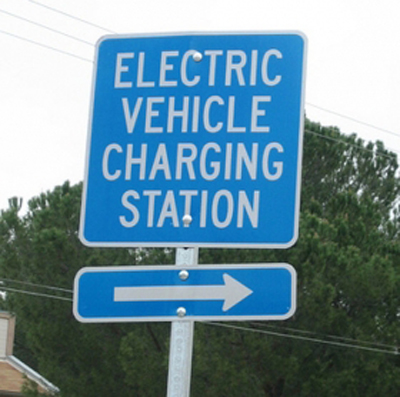Selling electric vehicles, easy; charging options, very tricky
Bart King, Sustainable Life Media
A new survey from Accenture finds that the majority of consumers are interested in buying plug-in electric vehicles (PEV).
But how consumers charge those vehicles is a complicated issue, with charging infrastructure and cost being top concerns.
Accenture surveyed 7,000 consumers in 13 countries and found that consumer preferences for charging PEVs could increase the cost and complexity of managing the electricity grid and charging infrastructure.
Here are the figures:
- 60 per cent of consumers would consider buying a PEV for their next car purchase.
- 68 per cent would probably or certainly do so within the next three years (23 per cent certainly, 45 per cent probably).
- Respondents in China are by far the most enthusiastic, 96 per cent of them probably or certainly considering a purchase in the next three years.
Consumers’ preferences for charging PEVs, however, could challenge utilities and charging service providers by increasing grid congestion and peak time electricity demand.
- Two thirds (67 per cent) of consumers are not willing to let charge point operators limit when they can charge their PEV. A further 20 per cent would only accept limits if they fell within time periods they had chosen. This would reduce the scope to manage electricity demand and avoid grid congestion.
- 62 per cent would reject battery swapping, where empty batteries are quickly replaced at service stations for fully charged ones, preferring to plug in their car to recharge the battery. This could limit the opportunity for charging off peak, when battery swapping companies would most likely refuel batteries.
- 55 per cent would only plug in their PEV when they need to charge up, rather than whenever they park. This behavior could result in less predictable charging patterns and could reduce the demand for public charging infrastructure.
Consumers would also need more supportive charging infrastructure in order to adopt fully electric PEVs. Only 29 per cent of car drivers would buy fully electric PEVs. 71 per cent would prefer plug-in hybrid EVs (PHEVs), which run on gasoline and diesel once the battery runs low.
However, 85 per cent say fully electric PEVs have insufficient battery range to cover their daily driving needs. But 83 per cent cite the insufficient availability of charging points and 70 per cent think charging times for full plug-in EVs are too long.
“As drivers get behind the wheel, they may become more open to fully electric vehicles and battery swapping services. But denser charging networks and fast charging units will be required if utilities want to drive up demand for all plug-in electric vehicles,” said Matias Alonso, global managing director, Utilities, Accenture.
“The uncertain demand for plug-in electric vehicles and their impact on the grid means that energy providers must choose between running the risk of network overload and the need for large infrastructure investment, or early deployment of smart technologies that proactively manage local electricity demand and supply.”
Cost not the only factor of adoption
The fuel source of electricity is important to car drivers: 80 per cent would want to know the source of the electricity used to charge their car, while 45 per cent say that the fuel source would have an impact on their decision to buy a PEV.
Of these, 85 per cent would be encouraged to buy a PEV if the fuel source was renewable. Nuclear and fossil fuel generated electricity would discourage 48 per cent and 51 per cent respectively from buying a PEV.
The cost of PEVs is not currently the only key factor of adoption. Around 51 per cent of consumers would be motivated to buy a PEV for their next purchase if the total running cost was lower than for a conventional vehicle.
More important, however, would be the availability of charging points (63 per cent) and the battery range being equal to a full tank of a conventional car (53 per cent).
When asked what incentives would encourage them to switch to a PEV, 65 per cent of respondents cite free parking, 44 per cent point to toll discounts and 43 per cent to the availability of priority lanes as potential incentives.
“The cost of buying and running plug-in electric vehicles will be a major factor determining take up, but city authorities and energy providers will have to motivate drivers in non-financial ways if they are to push up adoption,” said Matias Alonso.
“Stimulating demand for plug-in electric vehicles at the lowest possible cost to investors and taxpayers will require the public and private sectors to segment the market and offer a range of non financial incentives. For instance, young urban drivers may be attracted by the availability of parking concessions and the guarantee of renewable fuel sources.”
Competition for charging services
Utilities may face strong competition in the charging services market. When asked who they would prefer to buy charging services from, 79 per cent put utilities in their top three choices.
Seventy one per cent of people listed gas/diesel service stations in their top three. Retailers and local governments fare less well on 51 per cent and 48 per cent respectively.
The vast majority of car drivers would want to pay as they charge, as they do for fuel today, requiring utilities to consider changes to their revenue and billing systems if they are to service the market.
Three recommendations for energy utilities
- Reach consumers through commercial alliances with automotive distributors: this will help monitor local demand for PEVs and their impact on infrastructure. It will also give them advantaged access to new customers as they purchase PEVs.
- Optimize infrastructure through collaboration with distribution network operators (DNOs): This includes investing in smart charging to automate charging at times and speeds optimal to the grid and generation capacity. Utilities should also use analytics to exploit consumer usage to better determine patterns of demand and supply.
- Engage consumers through market segmentation: Target customer groups with different offers to increase margins as adoption rises. Utilities should also ensure the focus of PEV pilots covers the customer experience as well as technology issues.points and 70 per cent think charging times for full plug-in EVs are too long.
To see the original article: http://www.sustainablelifemedia.com/content/story/brands/selling_evs_easy_charging_options_tricky























